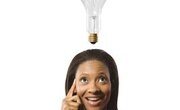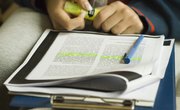Sometimes what people say or do isn't immediately revealed. Figuring out what they are inferring in their words or actions is an important part of communication. Inferences and conclusions from that analysis can be powerful tools for understanding people and the decisions that they make. An inference is an assumed fact based on available information. A drawn conclusion is an assumption developed as a next logical step for the given information. Finding ways to look at inferences and the conclusions drawn from that analysis simply help you to better assess the situation and messaging. While these are two tools that work together, be cautious in relying solely on what you determine is being inferred. The drawn conclusion is still subject to human perception.
Drawing Conclusions
Conclusions rely on a situation's facts to figure something out that isn't obviously stated or seen. After you look at the evidence in front of you, the conclusion you draw is the next logical step. That statement has two requirements to qualify as a fact. First, it must be logically-derived from the available information. Second, it must not be stated or inferred from that available information. For instance, if you know a series of facts about your friend Jane’s current purse, you can then look at those facts to draw a conclusion. The facts might be that the purse looks discolored and damaged, she has enough money to buy a new purse and she is in the purse aisle of a store. From that series of facts, you could conclude she will buy a new purse. However, while you could draw the conclusion that Jane will buy a new purse based on the facts you know, there is still no inference to suggest she has made the purse buying decision. Even if the facts suggest a logical concluding point of a purse purchase, the actual decision may not reflect the conclusion you draw.
Making Inferences
Inferences also rely on facts in a situation. Instead of drawing a conclusion, inferences use facts to determine other facts. You make inferences by examining the facts of a given situation and determining what those facts suggest about the situation. Using the example of Jane's purse, you may look at it and infer the damage looks like she sat it down in water. You could also infer that by standing in the purse aisle with money in her hand and a damaged purse, she is considering buying a new purse to replace the water-damaged one. These are both facts drawn from the available information. Again, like with a drawn conclusion, they still make no prediction on any future purse-buying action by Jane.
Draw Conclusions From Inferences
You can use also use inferences to generate additional information. With that additional information, you can then draw a conclusion. For instance, from your inference about the water damage to Jane’s current purse, you might come to the logical conclusion she will want to purchase a purse that is more resilient against water damage. By using inferences to gain more information, you can draw conclusions that may be more accurate and more specific. Instead of just drawing the conclusion Jane will purchase a new purse, you now can predict which kind of purse she will purchase. While drawing this conclusion that Jane will purchase a more water-proof purse may be a natural progression, it doesn't take into account Jane's personal preferences like a love of only black purses regardless of their materials.
Make Inferences from Conclusions
You can also use conclusions to generate additional information about the situation followed by gathering more inferences. As an example, you see Jane purchase another of the same kind of purse she originally owned and infer that she may not have been very concerned about the water damage. You can use this technique to further review situations and learn how to make better inferences and conclusions in the future. The technique can also be used to gain more insight into people such as Jane’s lack of concern for the water damage to her purse translating to a love of a specific brand or style of purse overriding durability. Human nature and environment are two factors that strongly affect the processes of making inferences and drawing conclusions. Sometimes the analysis doesn't match up with what is actually going to happen. Using inferences and drawn conclusions still are helpful techniques in looking at behaviors. Tip: if you are watching Jane from a distance in the purse aisle and aren't actually shopping for purses with her; you may want to continue your analysis of the situation at home.
Related Articles
References
Writer Bio
Kristyn Hammond has been teaching freshman college composition at the university level since 2010. She has experience teaching developmental writing, freshman composition, and freshman composition and research. She currently resides in Central Texas where she works for a small university in the Texas A&M system of schools.










